
The second leg of our pilgrimage adventures.
(Click for the part 1.) Spain welcomed us with warm temperatures and a noticeable cultural change from Portugal. People were louder and more passionate about everything. We stopped for lunch in the first town, and the restaurant's owner couldn't stop talking to us during the whole meal. As his English skills were about the same as our knowledge of Spanish, we didn't get many messages across, but it didn't seem to bother him. Also, the meal portions in Spain are bigger than in Portugal, for the same prices. Good.

The path then returned by the ocean, and alongside were arrays of unfinished mansions. It's no secret that the 2009 financial crisis took a massive hit on Spain, but my goodness, seeing it in person... For instance, this one:

Just some windows, furniture, plumbing, and it would be finished. But instead, it is left abandoned. While passing these, I was thinking about market forces, and also that it would be a prime spot to spend the night.. but since it wasn't even 3 pm yet, we kept marching.


A few kilometres up the road, we found this, another unfinished property.
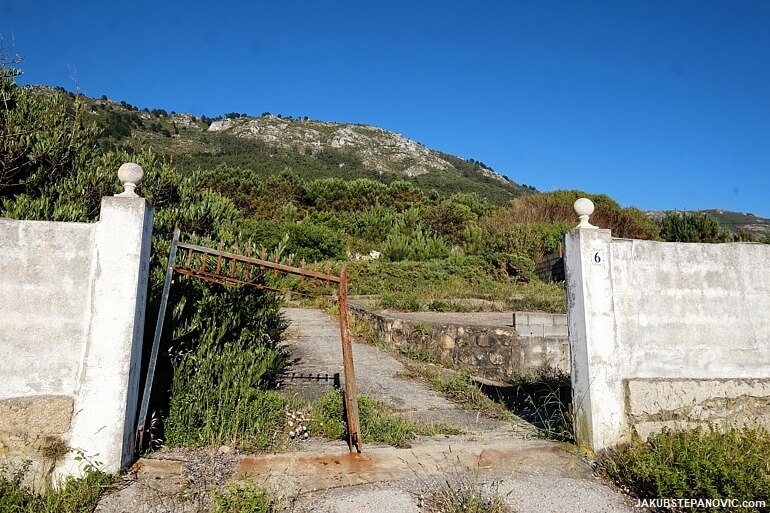
no. 6, that's it! Our address for tonight, right there.
The sun was still quite high up, so I thought about going for a swim. But the ocean had a strong current going on, bringing large waves — that, together with the uneven rocky terrain had written trouble all over it; thus, I passed and relaxed a bit. Later, the ocean was calmer, good enough to get in.
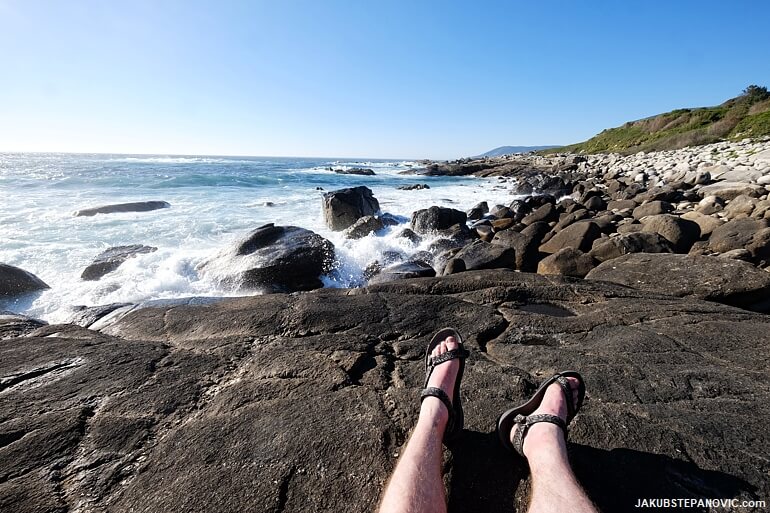
Because a bath before bedtime is grand, that's why.
Then just set up all the sleeping stuff, and enjoy the view from the bedroom...

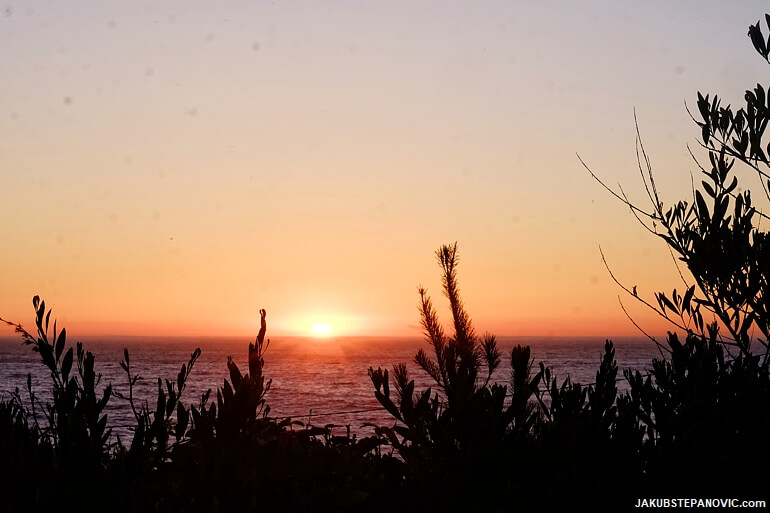
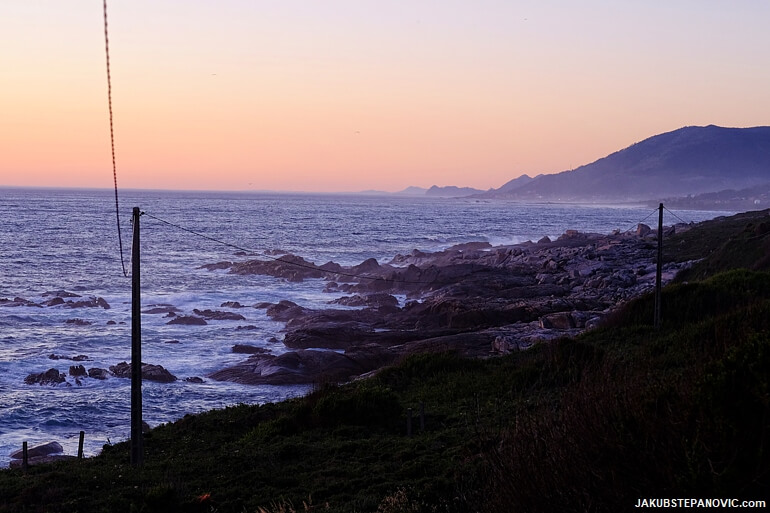
DAY5
Starting up early, the sunrise colored everything in vivid hues.

In a moment, we arrived into Oia, a small town with a large, pretty monastery:

Then, although the path keeps following the coastline, I planned a diversion into the local hills. My map showed that there should be a castle, and dense contours with occasional rivers promised some waterfalls. So far, our progress was faster than expected; therefore, a day-long break would be no problem. Might as well give it a go.
The issue was, while we easily found the trailhead, it was clear that the path didn't see any traffic for a few years. It was just an overgrowth forest of dense thorny bushes and shrubs.

Believe it or not, that's the trail. Can't see it? We couldn't either.
After walking through such an environment for a while, our legs looked like we fought a lion or two. Dirt, sweat, and blood. "That's what pilgrimage should be, right?" I couldn't let it ruin the day. Eventually, we made it onto a proper road, so the navigation was a piece of cake. In a bit, the first river came in sight. Yey, the vision of waterfalls worked out!

That was just super convenient. The clean stream was an ideal place to cool down, wash ourselves, and do the laundry while at it.

The elevation we gained revealed some outlooks every now and then.
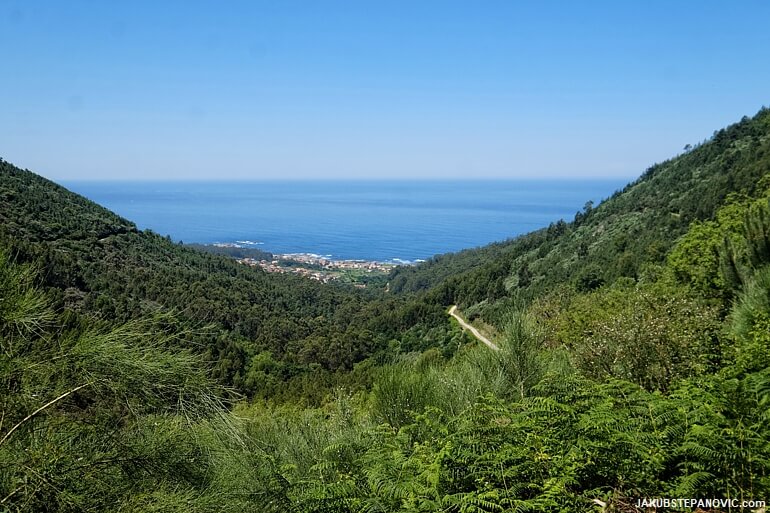
Then there was a junction which wasn't on my map. We counted our chances and went for the direction that looked like it'll cut straight into the castle. Ummm, in a mile or so, we were fighting through a jungle again, with no hint of a path at all. I was thinking, "that could be fixed by another waterfall," and sure enough, we run into one. Into the middle of it, to be clear. It was a rock shelve with a good drop down on the one hand, on the other was a steep wall up, and the rest was also seemingly inaccessible terrain. It was a beautiful remote location with no signs of civilization, a good place to chill, but at the same time, I was trying to figure out what should be our next step. Nobody was keen on returning the same way we came, so we climbed forward.
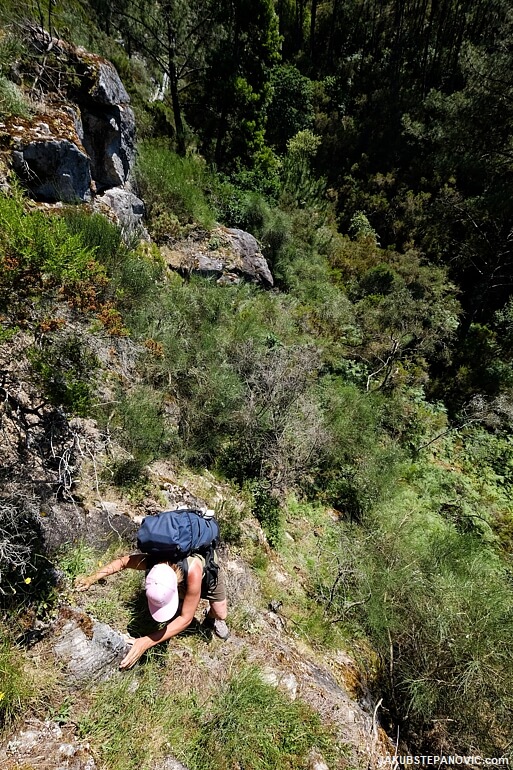
Then we reached the coordinates where the castle supposed to be. But the only thing reminding of caste was a few rocks — if there wouldn't be a sign marking the spot, I wouldn't even think it is the place. The sign stated that there used to be some fort, but it is no longer there. "Hm, like the paths, I guess." After such a journey, this wasn't adding moral spirit to either of us. However, just a tad further came a redemption in the form of this stunning natural pool with cascades. Swimming there was amazing!
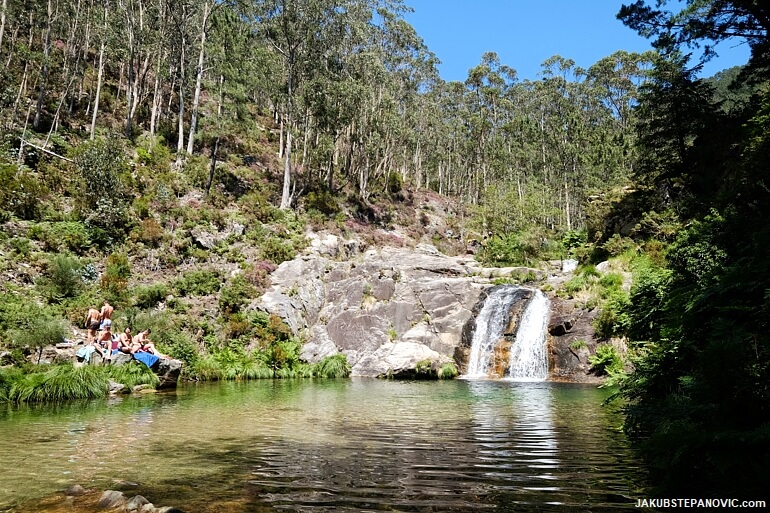
Some locals were there, which made sense. If I'd have thins behind my house, I'd be here too. The pools are accessible by a road suitable for cars with high ground clearance, which reminded me of the freedom of exploring remote lakes in Colorado, and served as a welcomed, easy walk away. Having no other points of interest prepared for this area, we descended back to the shore...

..where we found an old windmill, under which was a campground. It was convenient and pretty, so we checked in, ate local food "zorza" and enjoyed the ocean.

It was noticeably colder than the lakes and rivers from earlier, but still super nice. Add fresh air, gorgeous sunset..
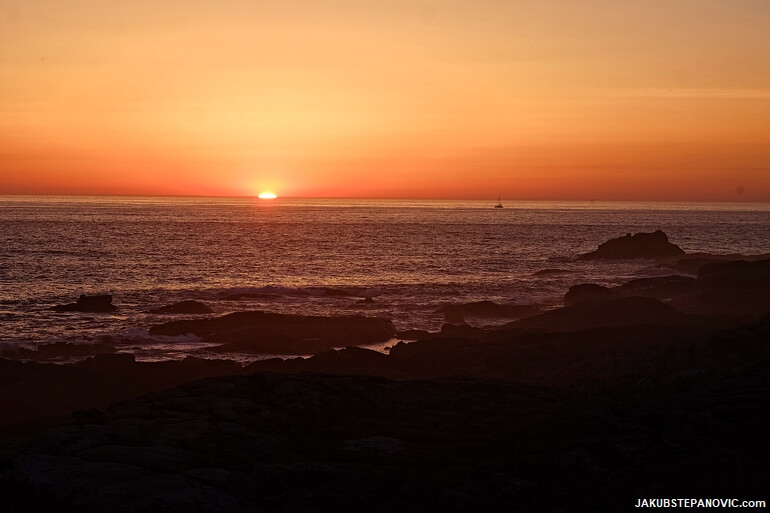
...and the moon lining up with the windmill... What a way to end a day.

DAY6
Same as the previous morning, we started early.

Besides the convenience of colder air, it is also a good way to see some locals doing their stuff — because once it gets hot, they disappear somewhere into the shade, take a siesta.
Along the road, we passed a nice lighthouse..
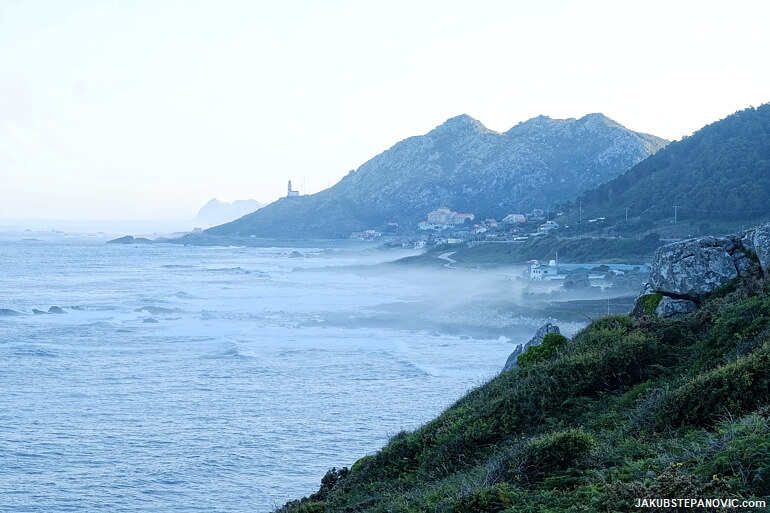
..behind which is a town called Baiona.
It has beautiful riviera, so we stopped for breakfast.
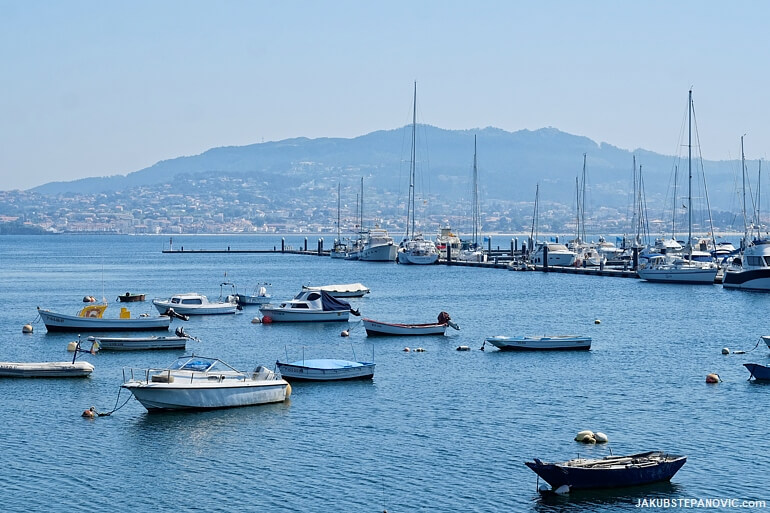
After a tremendously good coffee and croissant, we crossed the Miñor river by a neat bridge from the thirteenth century. A few small villages later..
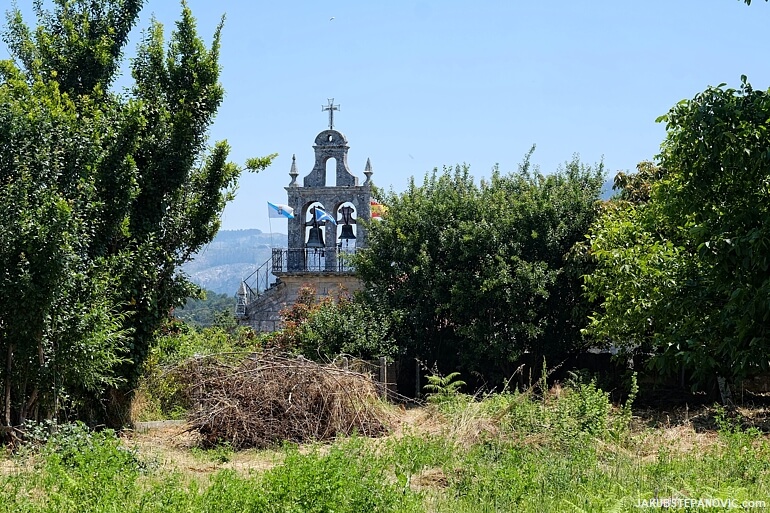
..we got into endless woods of eucalyptus trees.

They lasted pretty much all the way to Vigo, the most populous municipality of Galicia. There we ended in some restaurant where they served us tons of some odd seafood, and we called it a day. It was a long one; thus, I was confident that I'll pass out immediately. Bs, probably due to all the octopus weirdness I ate, I got only some 3 hours of sleep. At least I had time to chuck down some notes for this.
DAY7
It was over 30 km / 19 mi what we walked yesterday, so for today, we planned to take it easy and just explore the city of Vigo. That said, we made another diversion from the path, to see the most of it. Starting at the southern tip, there were beaches,
and a view on the Toralla island.

Getting into a bigger city brought all its common pros and cons. More culture, beautiful parks, and good restaurants were offset by more litter and more vandalism on historical structures. Oh, uh. Our way to the downtown went through a shipyard district.

As you walk through, you can take a look into the large shops where people work on marine-related stuff like screw-propellers etc.

Having a peek under the hood of the local industries, I like that a lot.
After passing the shipyards, we reached the city centre and the Castelo do Castro. It is a hill topped with a fortress, in which is a lovely public garden with great views. Such a nice space to have in a city; moreover, it is accessible free of charge.
Then we went to check out local cathedrals. "A large city like this," I was thinking, "will surely have some cool churches." The truth, we don't know. Literally, all of them were closed.
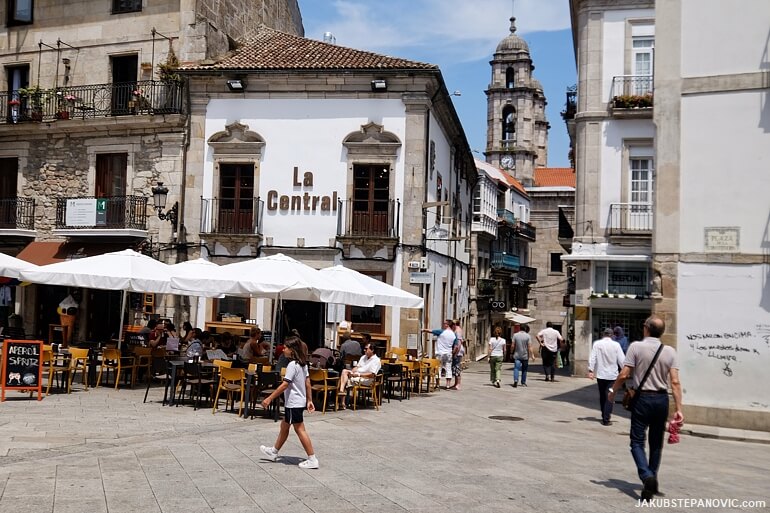
But that's fine, as they also have a museum of modern art, which was open. So we went for ice cream and to check out some artworks. Pilgrimage is hard; let me tell you.
The evening sky was overcast, which added an atmospheric touch to the residential areas further east. Grey sky, grey facades, grey roads.

Some details looked like a piece of art itself:
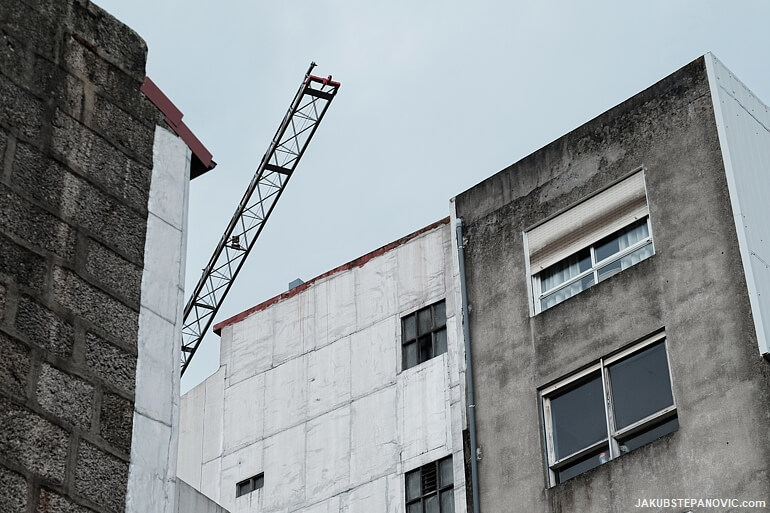
We found a place to spend the night, with a good view from the porch:

DAY8

Walking further into the Vigo Estuary, leaving the city behind.

The path led through beautiful woods, taking us past the local landmark, cable-stayed Rande Bridge, into a few villages...

...and later into a nice town of Redondela.
There we met two German ladies, lost, asking for help. I explained the road, shown the map, but they didn't believe that that's the answer, so they went to chat with someone else. It was odd, but each to their own.
We had a meal, a bit of a rest, and then we descended on a local beach. Since this was our last location near the ocean, we decided that we'd stay here for the night. From the beach was a good view of the bridge, and also on an island, not too far away. This sparked my curiosity.

Having the time, I decided that I'll swim to that island and check it out. On my way there I started to question such a decision, as there was nobody in sight there. "What if it's private... It's fashionable to own an island these days," I thought. Once I got out of the water, I found out that there's a small fence around the island, and inside was maintained park with a few mansions. I stayed outside of the fence, but took a look at what's inside. Near one of the structures, I saw a couple in very posh dresses, having a stroll. Then I noticed a security guard walking around. "Ayy, it is private..." me thinking.
Suddenly, the guard was coming from behind one rock on the beach. "Oh bugger, he's going to get me.. So what; there was no sign about private property or trespassing, I didn't cross the fence, what's he going to tell me?" I stood prepared for the confrontation. He walked towards me, but to my surprise, he just passed and kept his way. "What?" It turned out, one of the fancy ladies lost her hat in the wind, and this guy just went to collect it. Ok then; as I was keen to find out what's the deal with the island, it was me who had to start the conversation. His English was pretty much nonexistent; thus, no big talk happened. But he confirmed that it has restricted access, handed me a leaflet in English, and disappeared behind a locked gate. So, before starting swimming back, I opened the flyer and found out that the island, called San Simon, has a pretty interesting history. Among others, it was a monastery from before 10th to 18th century, and it witnessed the war of Spanish Succession — which added stories about a hidden golden treasure. From the 19th century, it was a quarantine island for the sick, and during the WW2 it was the biggest concentration camp of Spain. Nowadays, it's a museum operated by the Galician Government, and it is accessible by a boat once you get entry tickets. Cool!
Cool was also the view from the beach where we slept that night:
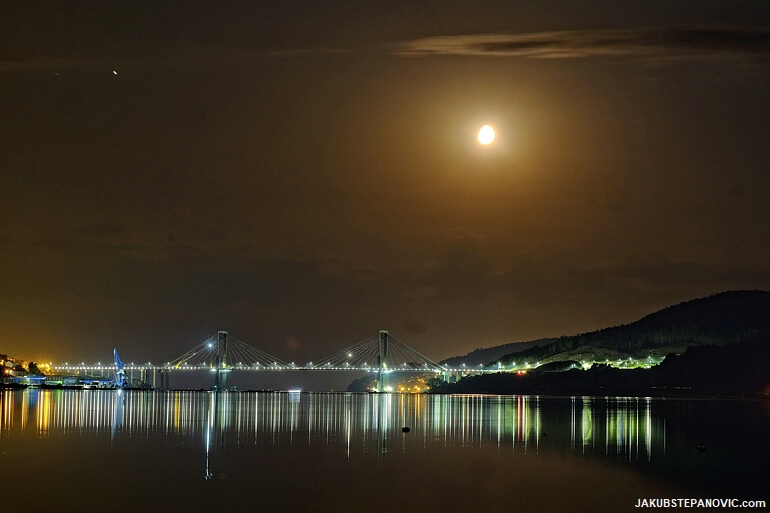
DAY9
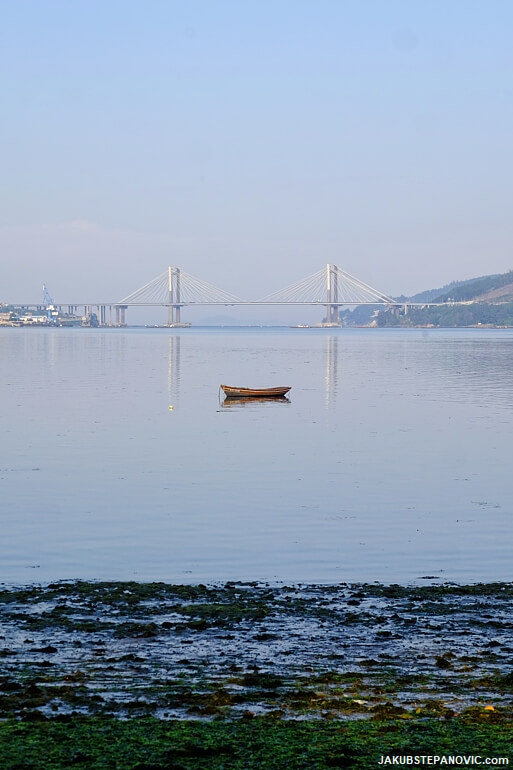
morning view on the Rande Bridge
Shortly we were crossing another medieval bridge and said bye to the ocean.

Heading into the inland, we passed several vineyards..
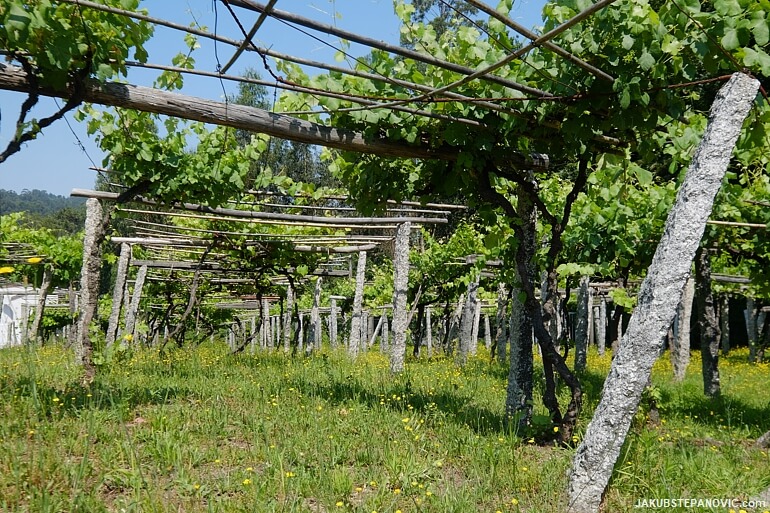
.. and entered Pontevedra, the capital of the local Province.
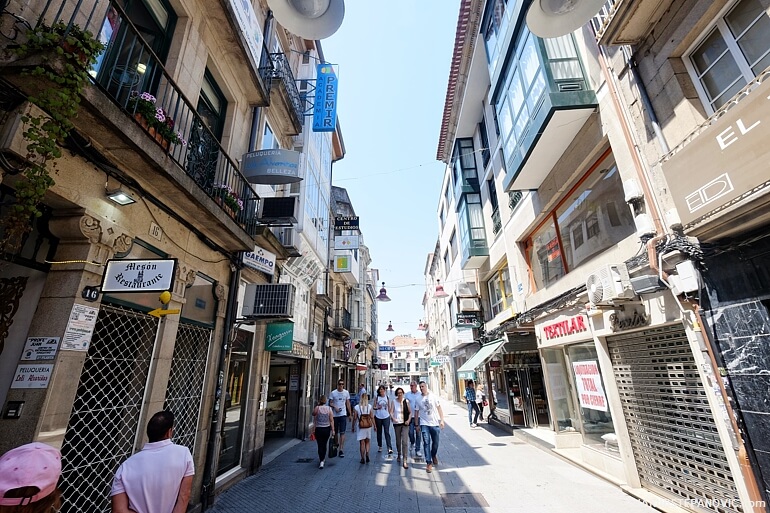
The city was pulsing with life and was pleasant to walk through.
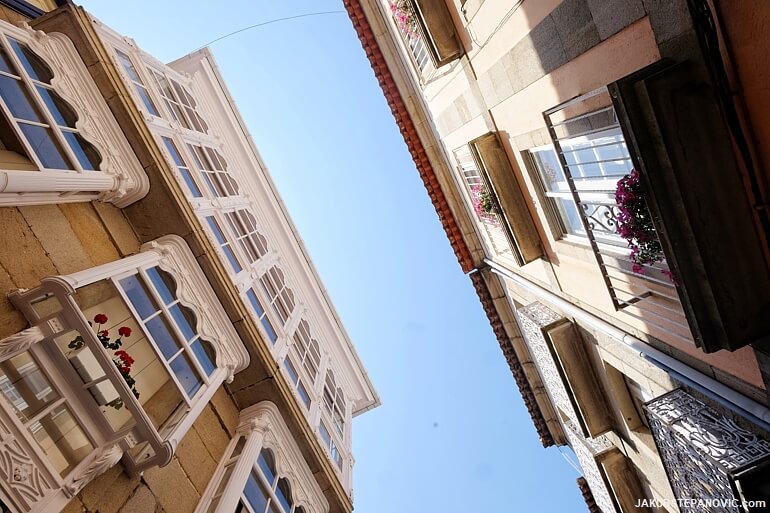
It has a well-preserved old town with many nice structures, such as the Capela da Peregrina:
We decided to stay in a hostel here. After checking in, my friend went for a nap and went to get purposefully lost into downtown. The streets dictated directions, and I had fun. This led me into the Basílica de Santa María a Maior:

...Where, by chance, some orchestra was practising.
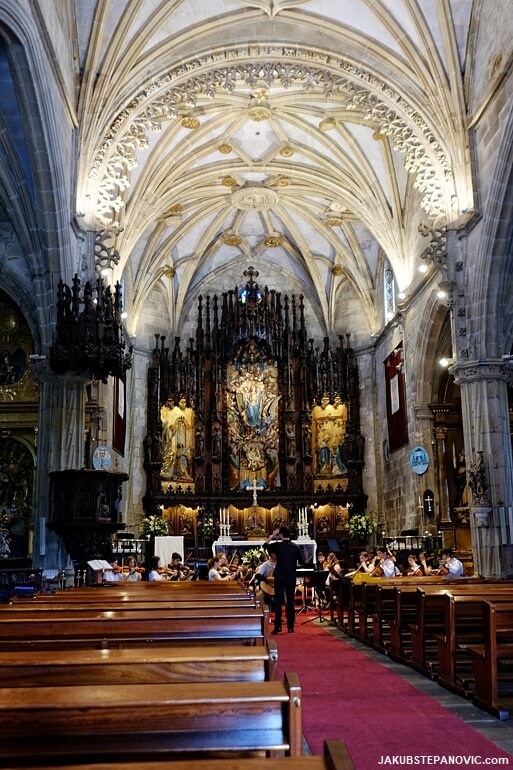
There were about two dozens players, most of which with strings, producing good music. Together with an appealing environment, I stayed a while.
Looking around the interior details, I discovered that it's possible to climb the church spire. As I'm a sucker for a good view, I went for it. It costs a Euro, and on the way up are two chambers with old relics. What a steal.
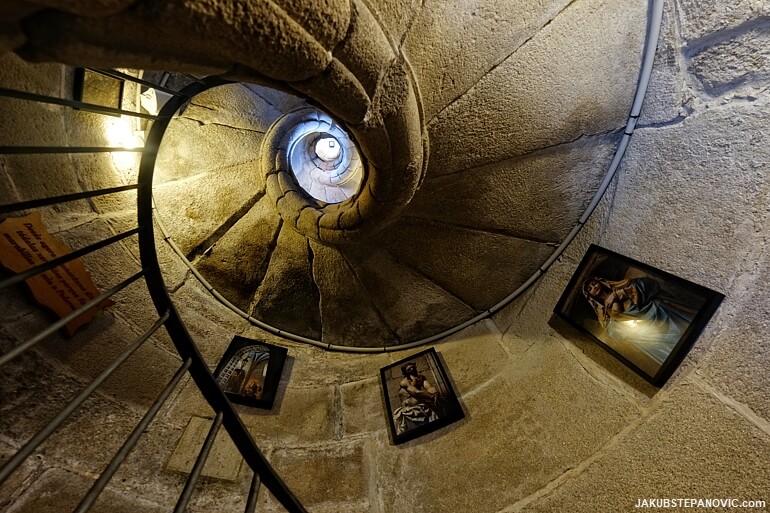
Staircase up
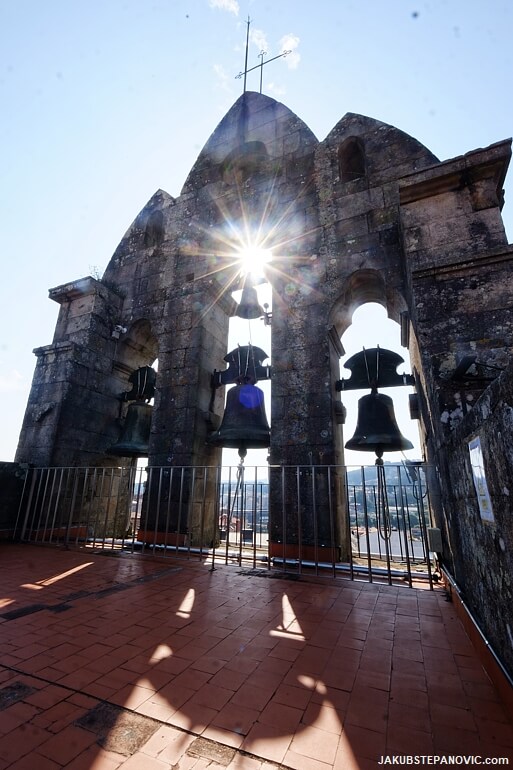
Up on the tower was a nice, open platform, and I had it all for myself: great views, a fresh breeze, another happy moment.
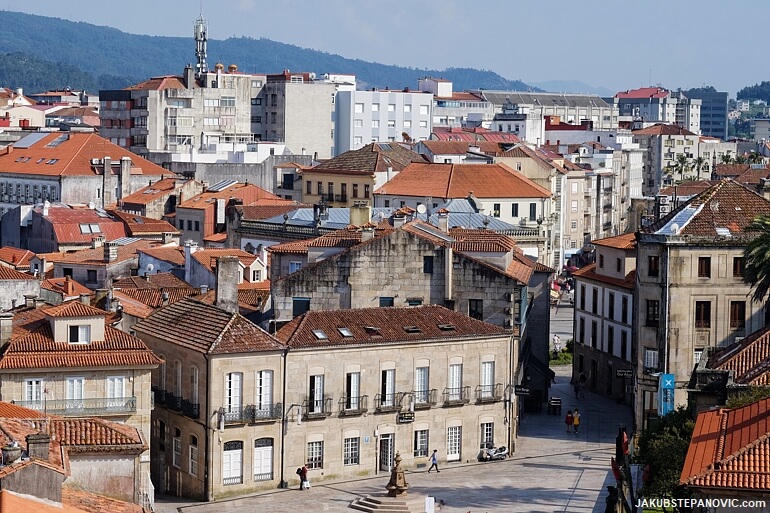
When I descended from the tower, I found the musicians got accompanied by a choir. So I stayed even longer and listened to the complete version of the instrumental tracks they played earlier. Then I returned to enjoy the local streets until the sunset.
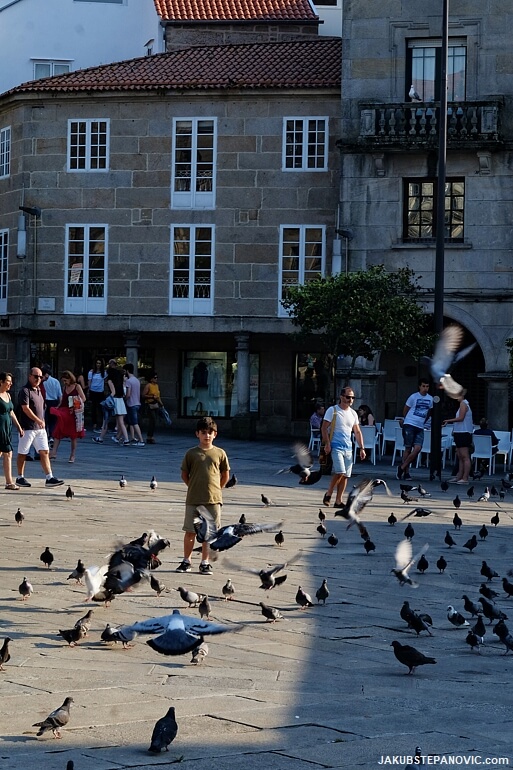
DAY10
From Pontevedra, the path goes through agricultural land, which lacks the attractiveness of the views we had during the previous days. As we were getting closer to Santiago, we saw more and more pilgrims on the trail. Many went on a bike, which made me miss riding one. Then we met a lady from San Francisco who got lost. I showed her the way, and we walked together for some time, chatting about Europe and the US.
The previous night, when I was looking into my map what's ahead, I spotted that within a small diversion, one can get into Rio Barosa nature preserve. So, that's what we did.

The lower section, right next to a parking lot, was rather crowded. But just as one climbed above the waterfalls, it was calm and quiet. Lovely place to have a walk around and learn a bit about local history hands-on. There are remains of 17 mills above the falls that used to harness the water power..

It wasn't the only diversion of the day; a few kilometres later, we saw a smokestack with an unusual spiral winding around it. As I like industrial points of interest, this worked like a magnet, and we went to check it out.

It is a former sugar processing factory, now rebuilt into a community centre and a museum. The smokestack is supposed to be an observation tower with a staircase and a lift going up. Unfortunately, it is not in operation.
Then we got into the town where we planned to stay that night, Caldas de Reis, and after a good supper, we learned that they have hot springs in there. That was pretty neat!

DAY11
On a pilgrimage like this one, it is more difficult to handle your mind than the physical aspect of walking. (Unless; of course, a person never walked further than from their living room to the garage, then it can be a proper struggle.) For example, one has to adapt to a completely different sense of time and its relation to distance than what we are used to nowadays. There's no such thing as "you just hop on a train for two stops" or "it's only 20m drive." If something's 20km away, it's going to take hours, period. Like in the old times.
Another biggie is to be able to cope with him/herself. Even if the road looks this good..
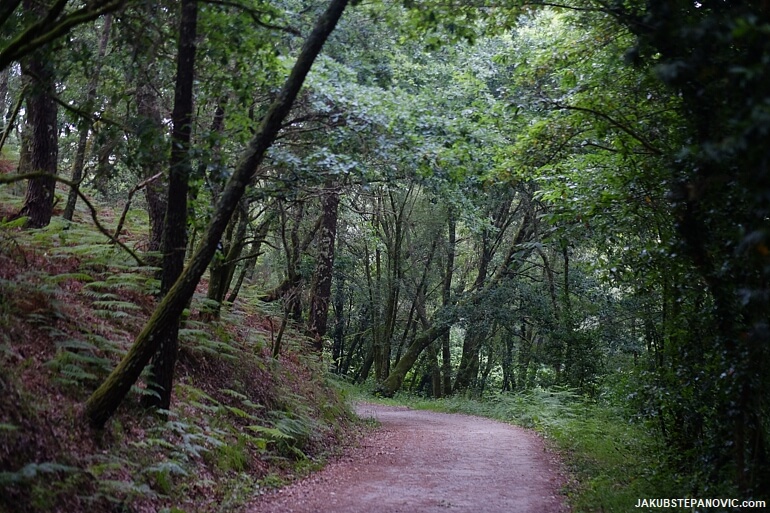
...when it looks the same for over half a day, the mind is escaping elsewhere. So after thinking about life, the good and the bad people in it, you start to think about various random things related to your work and/or hobbies. During this morning, I though a few hours about the sound of the sun. Like, how all those eruptions must sound, and that the sun is one heavy oscillator. Going as far as imagining the solar system as a big modular synth. Maybe all the physics forces are basically CV modulation inputs...
I was dragged away from these deep issues once we came across the churches around.
The combination of many palm trees and the elegant stone-built church spires reminded me of South America. It was an interesting case of reverse-thinking, as the churches there were built because of Spanish colonialism practices. But, in my childhood, I had a book with photographs of similar settings in Bolivia and Peru, and I didn't have a book about Spain — so I associated these views with those across the ocean.
Further down the road, a large industrial facility popped in view.
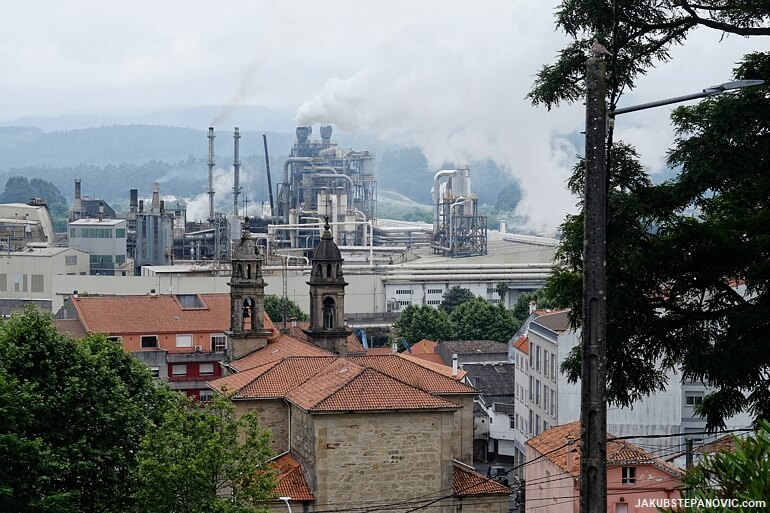
Emitting gallons of whipped cream into the skies.
That marked the entrance to Padrón, the last larger town before Santiago de Compostela. Closing in!
The city itself has a pretty cathedral, and I had a weird tasting fish there.

Many pilgrims decide to stay here, as the last stop before reaching Santiago. We opted to keep walking, so the distance we'll have to cover the next day would be shorter, and we'll have more time there. We ended a few kilometres past the Pardon's border, tired, but eager what's tomorrow going to bring. Thanks for reading!
READ ABOUT THAT IN THE PART 3...
..or, see my blog archives for more stories.
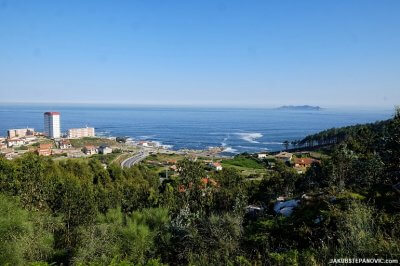
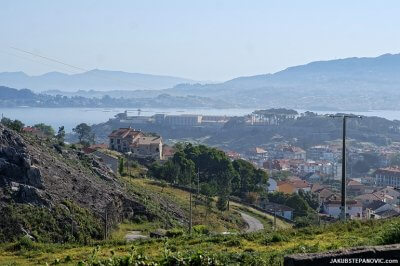

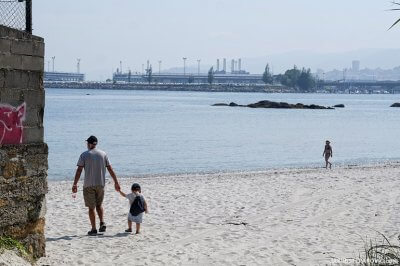



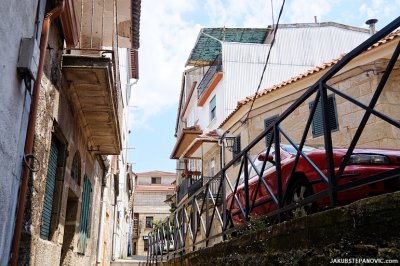
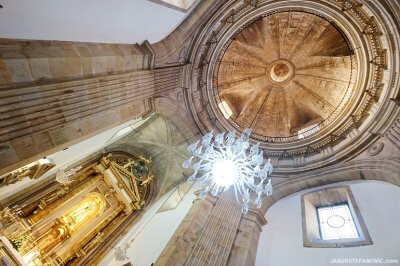

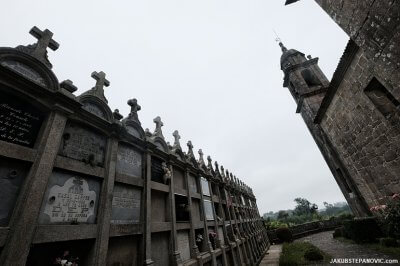
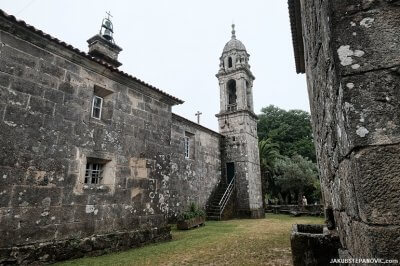
Comments